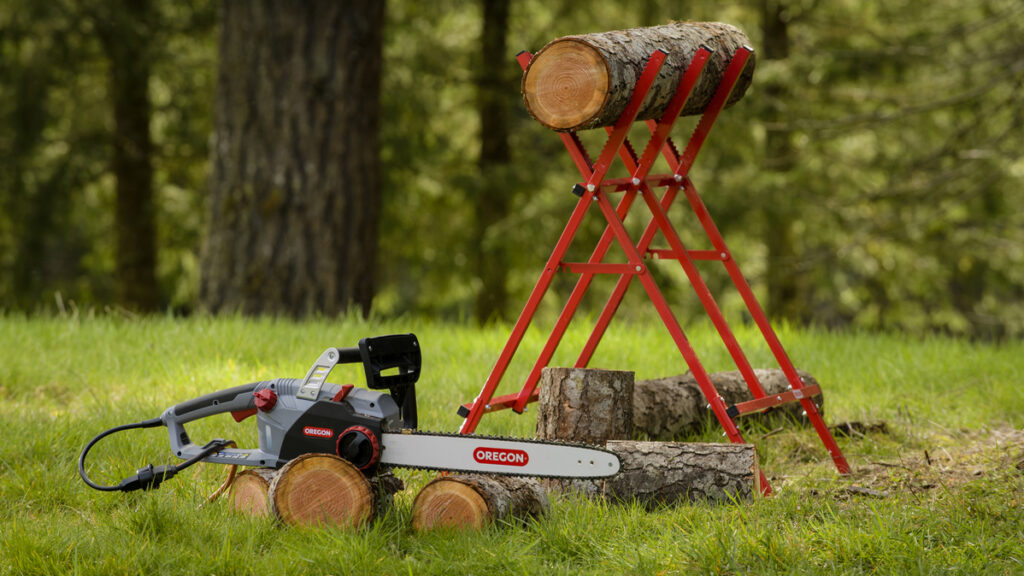You can never be too safe when operating any type of power tool, especially high-performance tools like chainsaws, whether you’re a professional or a casual user. Check out our six fast and easy suggestions to make sure your chainsaw is performing at its best and keeping you safe while using it.
Perform the routine Safety Checks without fail
You may think safety checks are mere formalities but they may be the difference between a scary accident and safety.
Starting with your chain, there are three basic checks you should perform every time you use your saw. A sharp chain will cut through wood faster and with less effort from the user, thus keeping it sharp will make it simpler to handle and better for your saw. Check out our simple guide here for help detecting a dull chain.
Check to see if your chain is tensioned properly. Not only will you get a faster and cleaner cut, but your bar, chain, and sprocket will last longer as well. Check that your chain is tight enough to touch the bar all the way around without hanging off the underside, but not so tight that it prevents the chain from moving freely along the bar.
The operation of your chain brake is the last, but one of the most crucial, tests. Simply put, the major goal of this feature is to block the chain from returning to the user.
Clean Workspaces are Underrated
When cutting wood, falling over logs laying on the ground is one of the most obvious but easiest mistakes to make. Make a plan for what you’ll cut and where you’ll cut it before firing up your chainsaw, and clear your workspace so you don’t trip. A sawhorse is great for cutting firewood to length while also preventing your bar from hitting the ground and blunting your chain.
Carry a chainsaw by the top wraparound handle with the bar pointing behind you when walking. This means that if you misstep, the saw will fall with the sharp edge facing away from you.

Work on your Technique, it makes all the difference
Not only would changing the way you stand and hold your chainsaw make it safer to use, but it will also make it more pleasant to use. Stand slightly to one side of your chainsaw. Ascertain that your feet are firmly planted on level ground.
You should constantly have a solid grip on your chainsaw, whether you’re cutting or switching between activities. When using a chainsaw, keep both hands firmly wrapped around both handles.
If you need some ideas about what to read next, here they are:
Keep the starts safe and simple
The start-up procedure for a battery chainsaw is remarkably simple. Simply insert the battery, engage the chain brake, grab both handles, and use your thumb to press the button on the bottom of the rear handle and on the side.
A petrol chainsaw can be started in two ways. To secure your chainsaw, place your right foot or the toes of your shoe on the bottom hand guard, underneath the throttle. Adjust the starting controls and pull the starter cord to ensure the chain brake is engaged (forward).
The back handle of the saw can be put between the user’s legs rather than on the ground for skilled and frequent users.
Speed is crucial
Before making contact with the wood with your chainsaw, be sure the chain is spinning at full speed. It may pull you slightly towards the wood and throw you off balance if it is too sluggish. Also keep in mind that the most dangerous portion of your chainsaw is the bar’s tip. You’ve probably heard of the term ‘kickback,’ which occurs when the bar’s very tip makes contact with the wood, causing it to shoot back towards the user.
When your chain reaches full speed, make contact with the wood at the middle of your bar, closer to the engine, rather than the tip. Allow the chainsaw to gently drag you towards the wood while applying light pressure before allowing the finishing cut.
Proper Protective Equipment is a must
It’s crucial to make sure you’re safe before you do anything. Protective equipment is required regardless of the task at hand, whether large or small. Start from the top of your body and work your way down to ensure you’ve covered all of your bases.
Make sure your head is protected if there is a chance of objects falling in the area where you’re working. Your eyes and ears are just as vital, so invest in a helmet that includes earmuffs and a face shield. While a face shield will keep your face safe, you should always wear safety glasses to protect your eyes from sawdust and other microscopic particles. However, if you’re using a battery saw, you won’t need to.
